![]()
![]()
![]()
Use LEFT and RIGHT arrow keys to navigate between flashcards;
Use UP and DOWN arrow keys to flip the card;
H to show hint;
A reads text to speech;
44 Cards in this Set
- Front
- Back

|
Bard-Parker Scalpel Handle - handle sizes come in #3 and #4 - handle #3 is used for small animals and with blade sizes 10, 11, 12,15 - handle size #4 is used for large animals and with blade sizes 20, 21, 22 |
|

|
Scalpel Blades - dispose of in sharps container |
|
|
Hemostatic Forceps |
- various types of grasping patterns and jaw serrations - come in different sizes and straight or curved - hold and retract blood vessels - most widely used instrument - characterized by having rachet, ring end, and box lock |
|
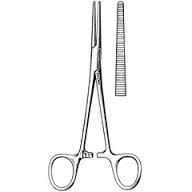
|
Halstead Mosquito Hemostatic Forceps - used to stop or secure hemostasis of delicate tissue |
|

|
Kelly Hemostatic Forceps - used to clamp bleeding vessels - serrations go 1/2 way |
|
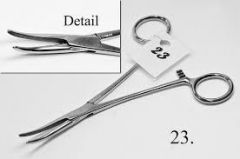
|
Crile Hemostatic Forceps - secure temporary hemostasis in deep anatomy |
|
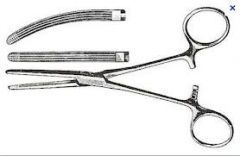
|
Rochester-Carmalt Hemostatic Forceps - less traumatic - clamp intestines, bowel, or large vessels |
|
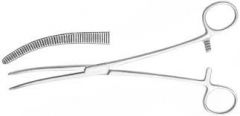
|
Rochester-Pean Hemostatic Forceps clamp large vessels - very traumatic |
|
|
Needle Holders |
- used to grab and hold suture - some can cut suture material - aka "needle driver" |
|
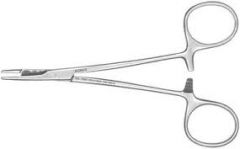
|
Olsen-Hegar Needle Holders - able to cut suture - one side is grabber, other side is scissors |
|

|
Mayo-Hegar Needle Holders - can't cut suture - have ridge |
|
|
Scissors |
- used to cut or snip through tissue, to separate tissue, or to cut suture material and wire - available in all sizes, lengths, and weights - classified by type of point, shape of blade, or cutting edge |
|

|
Standard Scissors - can cut suture - can be used to cut patient drape - can be sharp/sharp, blunt/blunt, or sharp/blunt |
|
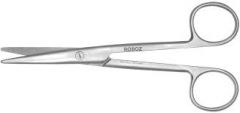
|
Mayo Dissecting/Operating Scissors - cut patient drape and dissect tissue - big, fat, and chunky |
|
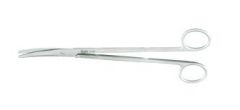
|
Metzenbaum Scissors -used only on fine tissues and vessels |
|

|
Littauer Suture Removal Scissors - remove sutures |
|
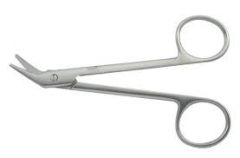
|
Wire Cutting Scissors - very traumatic - not used on tissue - only used to cut cerclage wire or wire sutures |
|
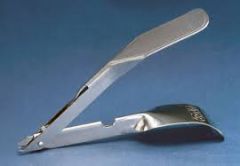
|
Stapler Remover - removes staples |
|
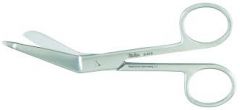
|
Lister Bandage Removal Scissors - cut through bandage material - always have blunted end |
|
|
Thumb Forceps |
- similar to tweezers - various types of jaw patterns - used to grab tissue or dressings - provide minimal tissue damage when used correctly |
|
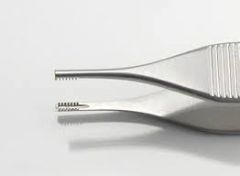
|
Brown-Adson Thumb Forceps - grab superficial, delicate tissue |
|
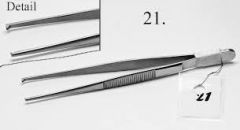
|
Rat Tooth Thumb Forceps - used to grab superficial tissue |
|
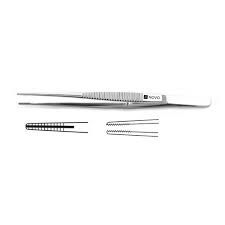
|
Cooey and Debackey Forceps - used to grab soft and bony tissue |
|
|
Tissue Forceps |
- same functions as hemostats |
|
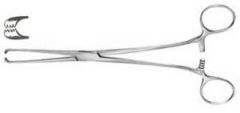
|
Allis Tissue Forceps - can hold sponges - holds body wall |
|
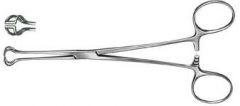
|
Babcock Tissue Forceps - atraumatic - clamp stomach, intestines, and bladder |
|
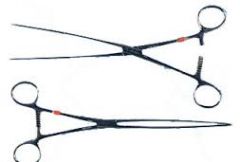
|
Doyen Intestinal Tissue Forceps - hold intestines |
|
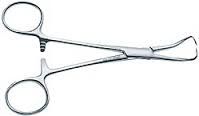
|
Backhaus Towel Clamps - attach drape material - used to hold articles together - some are atraumatic, others are traumatic |
|
|
Retractors |
-used to pull apart edges of incised tissue - helps surgeon visualize better - either hand-held or self-retained - hand-held retractors have several disadvantages: 1) need scrub nurse tech or assistant 2) if patient is small, retractor may interfere |
|
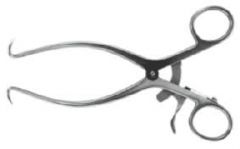
|
Gelpi Retractors - self-retained - used in orthopedic surgeries |
|
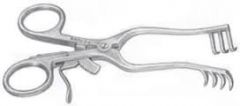
|
Weitlaners - self-retained - primarily used for spinal muscle retraction |
|
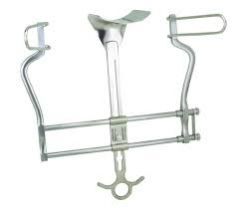
|
Balfour Retractors - self-retained - used to spread wide things i.e. abdominal cavity |
|
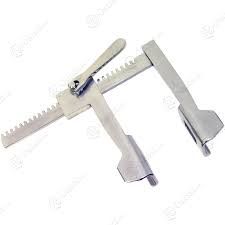
|
Finochietto Rib Spreader - self-retained - spreads ribs |
|

|
Senn Retractors - hand-held - used to retract fascia and muscle tissue |
|

|
Snook Spay Hook - used to find uterus and uterine horns during spay |
|
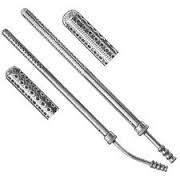
|
Poole Suction Tip - multiple holes for large amounts of fluid |
|
|
Orthopedic Tools |
- used for repairs and assist in the approach - bone clamps are designed to prevent crushing of bone when reducing a fracture |
|

|
Rongeurs - used to bite into bones and remove chunks |
|

|
Gigli Wire and Handles - used as hand saw to cut and chisel bone - used to dehorn cattle |
|

|
Curette - helps clean out bone - used to get bone marrow samples |
|
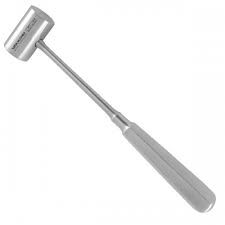
|
Mallet - used with osteotome to break or chisel bone |
|
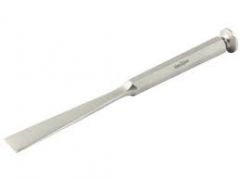
|
Osteotome - used with mallet to break or chisel bone |
|

|
Extractors
|
|
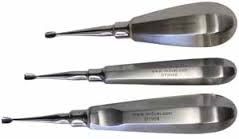
|
Root Elevators |

